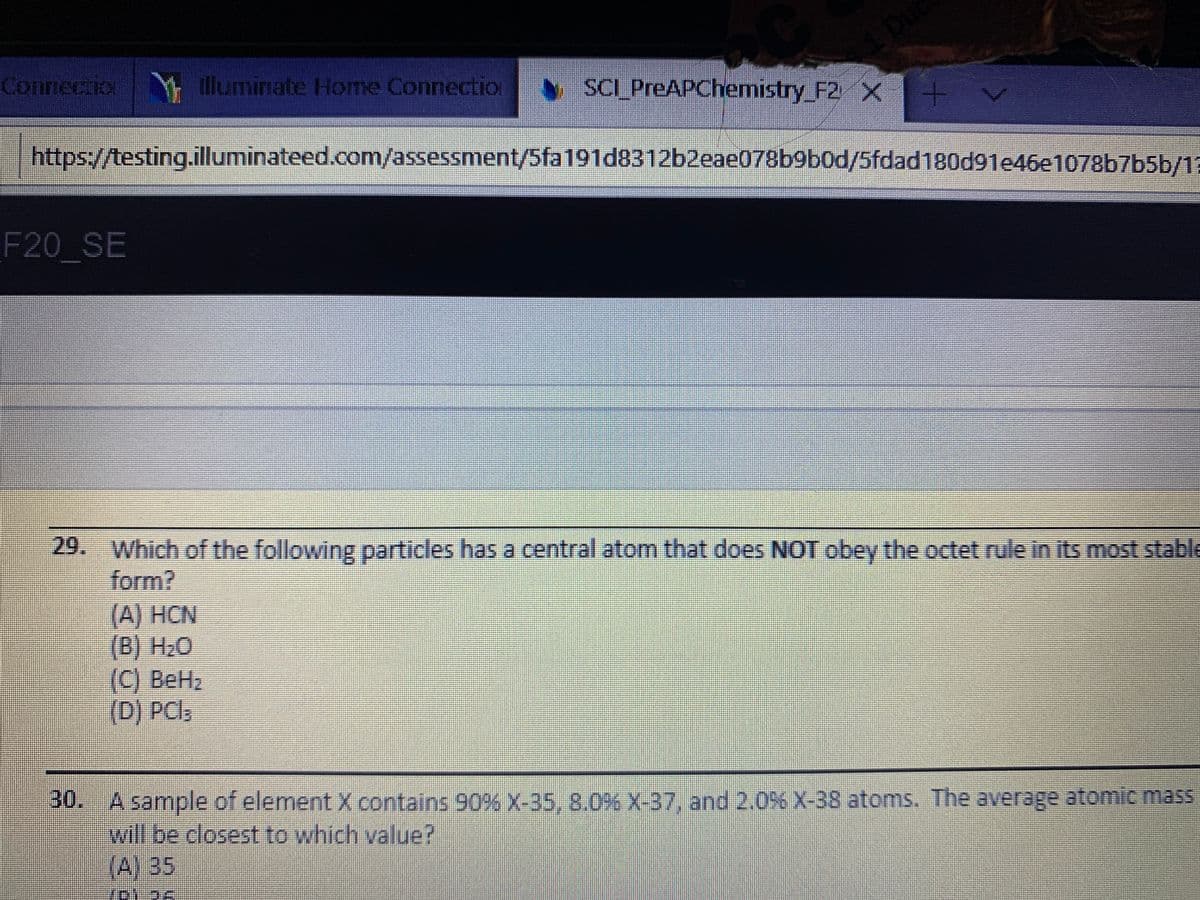Which of the following particles has a central atom that does NOT obey the octet rule in its most stable form? (A) HCN (B) H20 (C) BeH2 (D) PCI;
Which of the following particles has a central atom that does NOT obey the octet rule in its most stable form? (A) HCN (B) H20 (C) BeH2 (D) PCI;
Principles of Instrumental Analysis
7th Edition
ISBN:9781305577213
Author:Douglas A. Skoog, F. James Holler, Stanley R. Crouch
Publisher:Douglas A. Skoog, F. James Holler, Stanley R. Crouch
Chapter12: Atomic X-ray Spectrometry
Section: Chapter Questions
Problem 12.10QAP
Related questions
Question
I need answer 29

Transcribed Image Text:Connectio
Ytlluminate Home Connectio
• SCI_PreAPChemistry_F2X
https://testing.illuminateed.com/assessment/5fa191d8312b2eae078b9b0d/5fdad180d91e46e1078b7b5b/13
F20 SE
29. Which of the following particles has a central atom that does NOT obey the octet rule in its most stable
form?
(A) HCN
(B) H20
(C) BeHz
(D) PCI,
30. A sample of element X contains 909% X-35, 8.0% X-37, and 2.0%6 X-38 atoms. The average atomic mass
will be closest to which value?
(A) 35
Expert Solution
This question has been solved!
Explore an expertly crafted, step-by-step solution for a thorough understanding of key concepts.
Step by step
Solved in 3 steps with 4 images

Knowledge Booster
Learn more about
Need a deep-dive on the concept behind this application? Look no further. Learn more about this topic, chemistry and related others by exploring similar questions and additional content below.Recommended textbooks for you

Principles of Instrumental Analysis
Chemistry
ISBN:
9781305577213
Author:
Douglas A. Skoog, F. James Holler, Stanley R. Crouch
Publisher:
Cengage Learning

Principles of Instrumental Analysis
Chemistry
ISBN:
9781305577213
Author:
Douglas A. Skoog, F. James Holler, Stanley R. Crouch
Publisher:
Cengage Learning